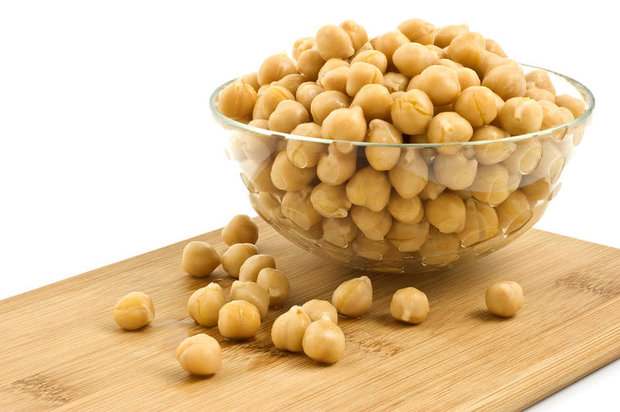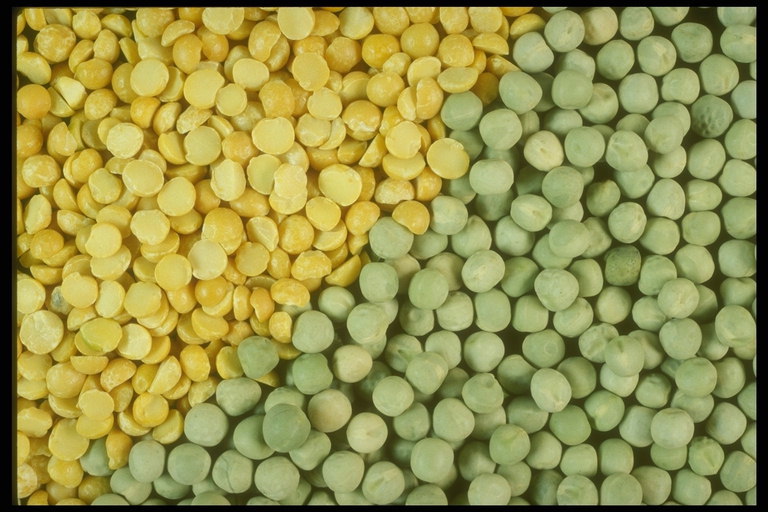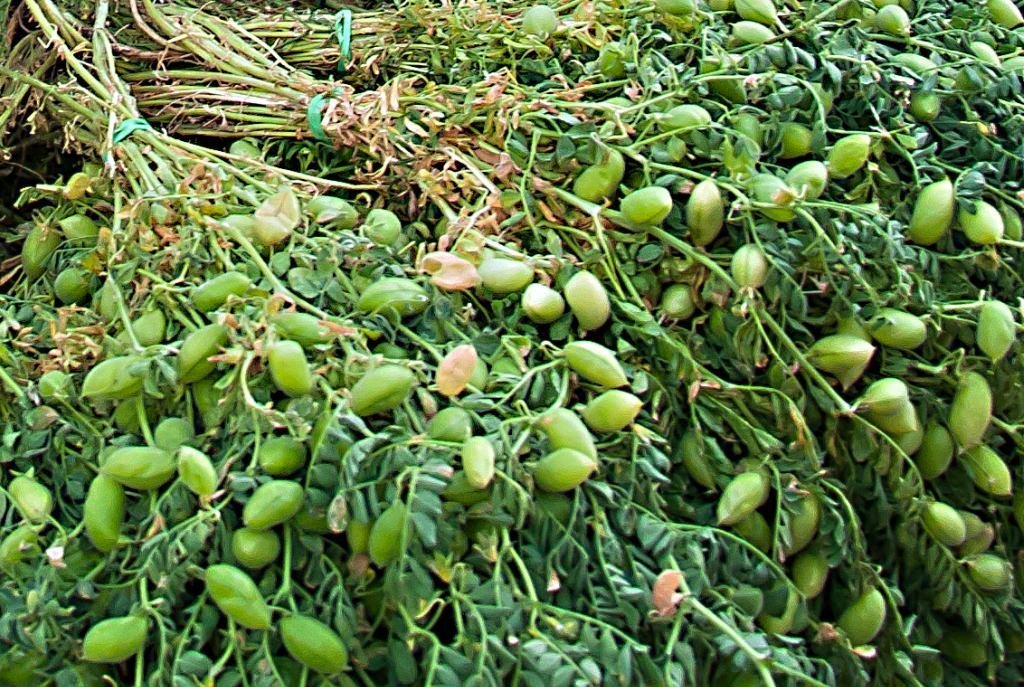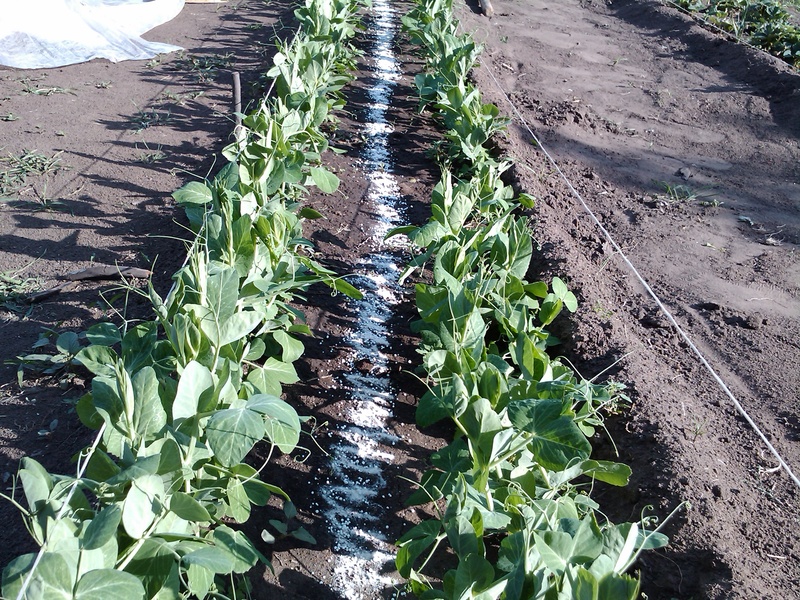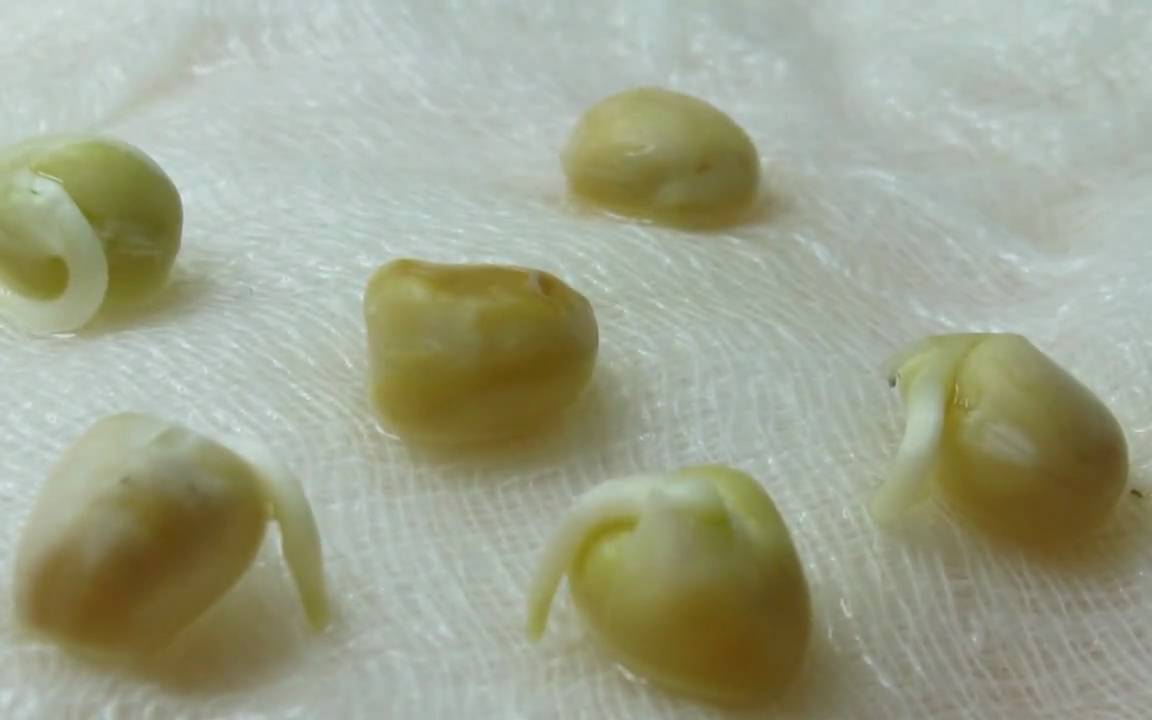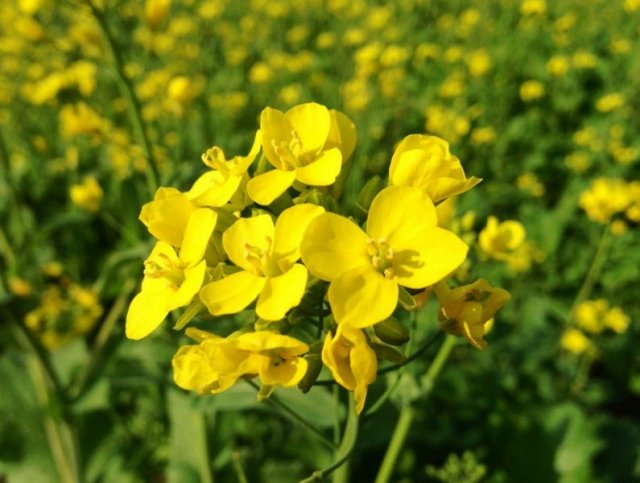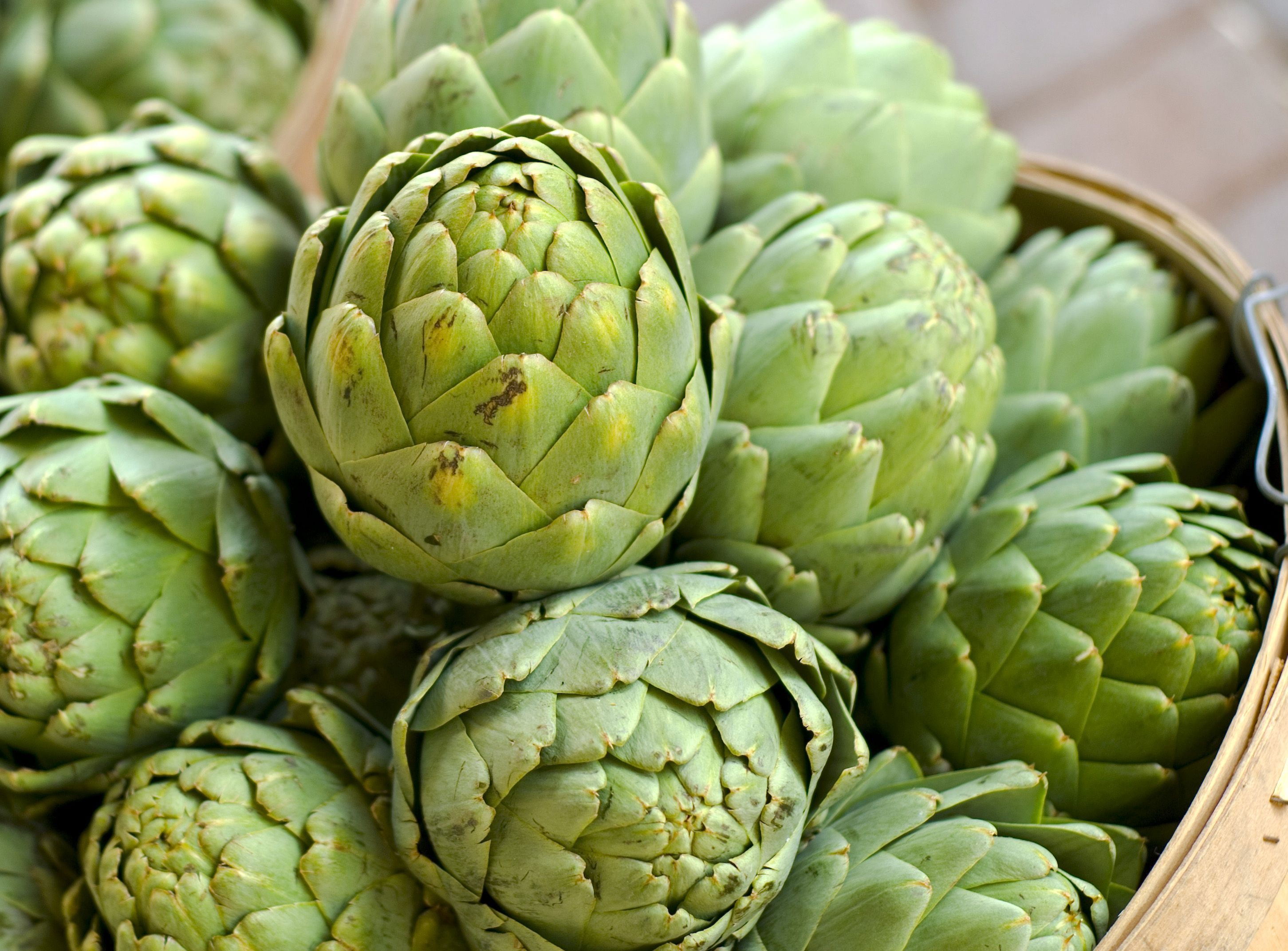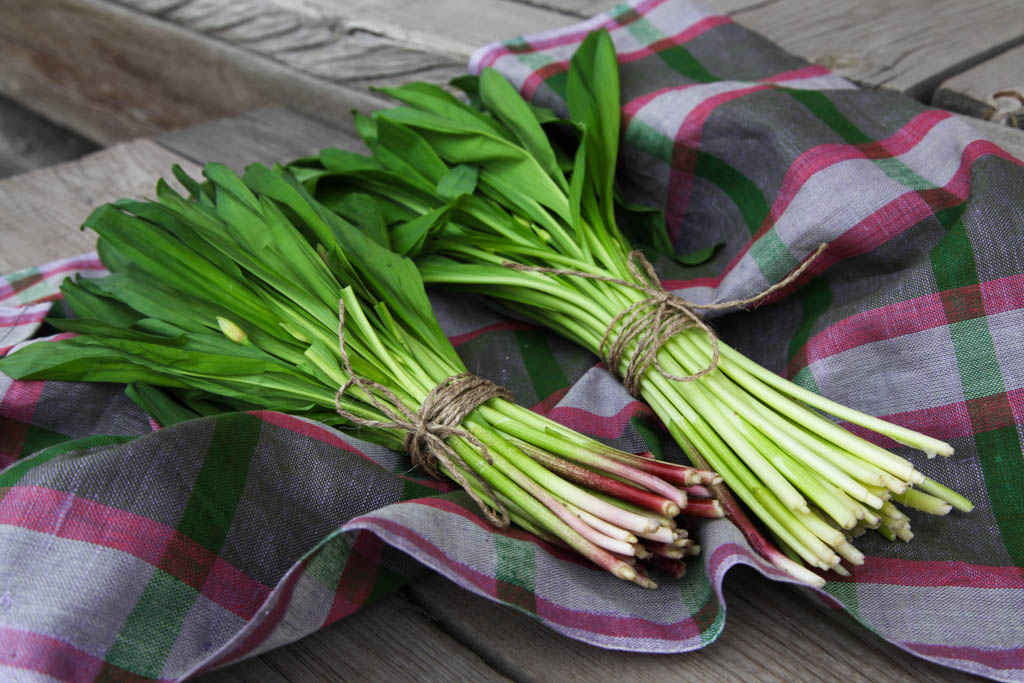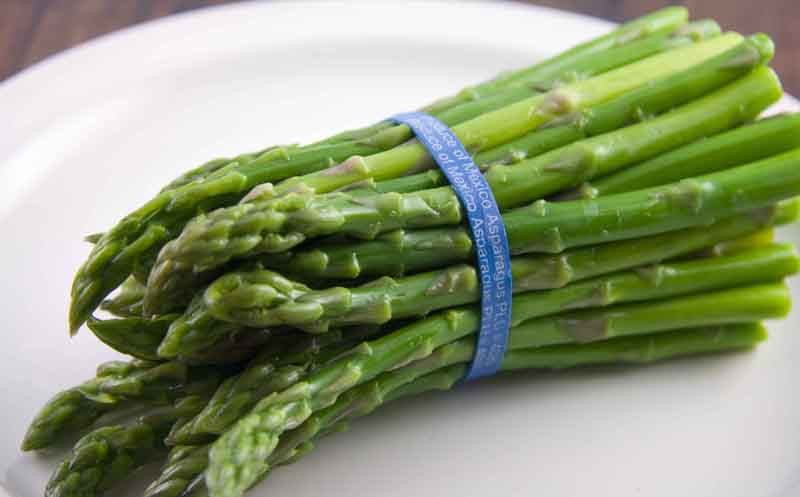Content:
Peas Chickpea is a leguminous plant from Central Asia. Otherwise, it can be called nakhat or nokhud, as well as lamb, Turkish or Uzbek peas. Chickpeas have been cultivated since ancient times. Long before our era, people consumed it as food and used it as a medicinal plant. At the present time, the culture is grown in India, the Mediterranean, Europe and Africa. The property of lamb peas is known not to accumulate toxins and nitrates. The ecological purity of the product is invaluable for today.
Description of the plant
In Russia, chickpeas are called shish or bubblegum. Thanks to the benefits of chickpea, many gardeners are trying to plant this plant in their country house.
So how are chickpeas different from regular peas? Although these two plants belong to the same family, there are many differences between them: taste, size, content of nutrients and useful substances.
- Chickpea peas are larger, so it takes longer to cook the fruits. But they are less conducive to gas formation in humans and animals. Before cooking, the mutton peas will have to be soaked for 24 hours.
- Chickpeas are higher in calories due to their oily texture.
- Unlike peas, chickpeas reduce blood cholesterol, improve lactation, have a nutty flavor, and there is much more iron and vitamin C in its composition.
- As usual, a chickpea bean pod contains only one pea, while peas have up to 10 of them.
- There is a difference in climatic preferences - a warmer climate is needed to grow chickpeas.
- When processed, chickpea peas will remain intact, and peas are divided into halves.
Chickpea is a fruiting annual with an erect stem, which is covered with hairs and grows up to 70 cm. Its unpaired compound (consisting of 10-20 leaves) leaves are oval with a pointed end. The beans are slightly swollen and short, generally contain one seed-seed, but sometimes there can be two, rarely four. The seeds look like a ram head with an elongated nose, hence one of the names. They are slightly rough and bumpy. Their color is light yellow, but it can also be dark, and the size ranges from 0.5 cm to 1.5 cm. Flowers of yellow, pink, blue, purple color are located two on a peduncle and have 5 petals.
Chickpea is a self-pollinating plant, pollination of which occurs with a closed flower, less often cross-pollination. The growing season is from 90 to 115 days if the variety is early ripening and up to 220 days for late ripening varieties. This culture is very thermophilic, but its seedlings can easily tolerate light short-term frosts. The plant blooms and forms fruits at a temperature of about 28 ° C and requires long daylight hours.
Useful properties and contraindications
Since ancient times, it was believed that the use of chickpeas increases male strength, improves lactation, and normalizes the menstrual cycle. Lamb peas were used medicinally to rid the kidneys of stones and remove excess fluid from the body.
Currently, scientists have proven such a property of chickpeas as effective cholesterol removal. In addition, the fruits of the plant have many other useful advantages:
- easily absorbed by the body;
- is one of the best sources of protein, not inferior to meat;
- contains carbohydrates and proteins;
- in tandem with rice, it has the ability to nourish the body with amino acids;
- it is very nutritious, therefore, with a small amount it can satisfy hunger;
- possesses a number of medicinal properties, can purify blood, prevent inflammation in the oral cavity, normalize heart rate and digestive functions, relieve back pain;
- significantly increases hemoglobin in the blood, promotes the elimination of excess cholesterol and normalizes sugar levels;
- used to treat eyes and skin pathologies;
- has anticonvulsant properties.
All these properties are determined by the rich chemical composition of the product:
- a protein that resembles the protein of a chicken egg in its properties up to 30%;
- fats from 6 to 8%;
- cellulose;
- amino acids;
- minerals and vitamins such as phosphorus, manganese, calcium, thiamine, iron, magnesium, riboflavin.
However, along with a large number of useful properties, it also has a number of contraindications. For instance:
- causes intestinal flatulence, so it is not recommended to use it with cabbage;
- provoke stomach cramps when used simultaneously with cold drinks;
- you can not use chickpeas together with pectin-containing fruits;
- it is categorically impossible to use chickpeas for diseases of the bladder, with gout, poor blood circulation, thrombophlebitis, inflammatory processes in the gastrointestinal tract;
- with extreme caution, it is worth using chickpeas for elderly people, due to the danger of strong gas formation.
Chickpea is successfully used in dietetics due to its ability to reduce the calorie content of the food consumed, while maintaining its nutritional value. But before using diets with the participation of this nut, you need to consult with specialists and your doctor.
Varieties
Of all 30 species of the genus Chickpeas belonging to the legume chickpea family, one has received such a distribution. Varieties of lamb peas are divided into subgroups by seed size:
- small-seeded (less than 200 g per 1000 grains),
- medium-seeded (200-350 g per 1000 grains),
- large-seeded (1000 grains weigh more than 350 g).
According to the growing season, varieties are divided into:
- early maturing - from 75 to 90 days,
- mid-season - from 90 to 115 days,
- late ripening - from 115 to 140 days of ripening.
The appearance of the seeds allows chickpeas to be divided into two subspecies: kabuli and desi.
- Cabuli: the shell is thin and light from the cotyledon, it is difficult to separate. They are often used as a whole.
- Desi: black and brown, coarse-coated seeds. I often use it for making flour.
The most widespread in Russia are the following varieties:
- Anniversary.A mid-season variety with high productivity. Ripens up to 100 days. Belongs to the medium-seeded subgroup with a weight of up to 310 g per 1000 grains. Seeds are slightly wrinkled with a yellow-pink color, they are distinguished by good digestibility of peas, high taste and protein content up to 27%. The yield of the variety is from 1.5 to 3 kg from 10 m². It is grown in Bashkortostan, Volgograd, Penza and Saratov regions.
- State farm.Mid-season variety, maturing up to 105 days, with angular red-brown seeds. Protein content - up to 24%, up to 290 g per 1000 grains. Resistant to drought and seed cracking. Productivity - up to 3.8 kg from 10 m². It is resistant to ascochitis. Grown in Bashkiria, Ossetia, Krasnodar Territory, Stavropol Territory, Samara and Penza Regions.
- Krasnokutsky 195.Mid-season variety - up to 115 days of growing season. It grows up to 40 cm in height, the crown is spreading. Seeds are yellow-pink in color, slightly wrinkled. Good taste, easy to boil. Protein - up to 28%, weight - up to 280 g per 1000 grains. Possesses high drought resistance. The beans do not crack. Productivity - up to 3.5 kg from 10 m².
- Rosana.The variety is tall with an average ripening period. Belongs to the kabuli pea subspecies. The seeds are light yellow and smooth. Protein - up to 26%, oils - up to 5%, weight of 1000 grains - up to 310 g. Differs in high yield. It has an average resistance to diseases.
- Azkan.A variety of Turkish selection.Matures up to 95 days, early maturing. Plants grow up to 45 cm, does not lodge, is resistant to droughts and hot climates. Productivity - up to 47 centners per hectare. 1000 grains weigh up to 490 g, protein - up to 25%. Disease resistance above average.
Landing
Chickpeas are undemanding to the conditions of detention. It is thermophilic, but also cold-resistant at the same time, calmly withstands frosts down to -8 ° C. You can plant chickpeas in any soil, and it will grow well, but at the same time it is able to enrich the soil in the course of its life. Early ripening varieties have a good harvest and have time to ripen in areas with a cool climate.
Sowing seeds can be started when the soil warms up to + 5 ° C. Depending on the region and climatic conditions in the southern part of Russia, this can be the beginning of April, and in the north of the country - the beginning of May.
Due to the fact that chickpeas need to be sown in early spring, the process of preparing the planting site should start in autumn, which will preserve its moisture. It is necessary to dig up the ground deeply, removing the roots and shoots of weeds is imperative, since chickpeas do not tolerate neighborhood.
The highest quality and largest grains are selected for sowing. If the soil is dry, then it is better to soak the seeds for several hours before placing them in the soil and sow to a depth shallower than usual, and then water abundantly.
Even disease-resistant grains should be treated with a preparation against nodule bacteria, such as Nitragin, before sowing, which will significantly increase the crop yield. There are several ways to plant chickpeas:
- Wide-row. Up to 65 cm is left between the rows, which will allow the plants to grow large and provide better moisture.
- Narrow-row. Up to 35 cm between rows. The positive side of the method is that chickpea plants quickly fill the soil space, preventing weeds from developing. In addition, nitrogen from the atmosphere is fixed by the roots of chickpea much more actively, and this increases productivity.
When growing a crop on a personal plot, 30 to 50 cm between rows is enough, and between individual plants 10 cm is enough.This crowding will not affect the development of chickpeas.
The seeds should be planted to a depth of 6 to 8 cm. And if the soil is dry, then a little deeper - up to 15 cm maximum, soaking the seeds for 10 hours before planting. Grooves are made in the prepared soil, chickpea grains are placed in them at the distance indicated above, and sprinkled with soil from above, after which the plantings are spilled.
Growing and care
Next, a few words about how to grow chickpeas to get a decent harvest. Agrotechnics here are not distinguished by complex techniques. Lamb peas Chickpeas can thrive on their own. During cultivation, you only need to periodically weed the plantings and moisten the soil during the dry period. Chickpea root reaches two meters in depth, so it reaches well into moist soil layers. The introduction of water is recommended by the drip method or by row spacing.
To grow chickpeas, you often don't need to feed the plant. It will be necessary to apply fertilizer only a couple of weeks after sprouting. In this case, nitrogen is not required, but phosphorus and potassium will accelerate both growth and flowering. You can fertilize the soil in a more budgetary way - by adding ash in a dry form or in the form of an aqueous infusion, there will definitely be no harm from this.
Growing and grooming tips
There are some tips for growing chickpeas from experienced growers:
- The main recipe for a good harvest is timely weeding, since chickpeas do not have good competitiveness for survival in front of weeds.
- It is necessary to prepare the soil without the introduction of chemicals, to which the plant has a persistent dislike, even in the case when herbicides were applied for crops planted in this place before chickpeas.
- Careful loosening of the top layer will help remove chickpea pests from it.
- In order to exclude diseases of planting with ascochitosis and fusarium wilt, characteristic of the chickpea culture, it is impossible to re-plant chickpeas on old beds earlier than 4 years.
- Planting chickpeas next to perennial grasses is highly discouraged.
- If pests occur: aphids, moths, chickpea flies, use the Fury preparation, but no later than 10 days before harvesting.
- Collect chickpeas before rainy weather.
- Before storage, the seeds are husked and dried in a thin layer. Then stored in dry places.
The combination of many useful properties is a great reason to start growing chickpeas in your personal plot. And adherence to simple growing rules will allow you to get a decent harvest.
